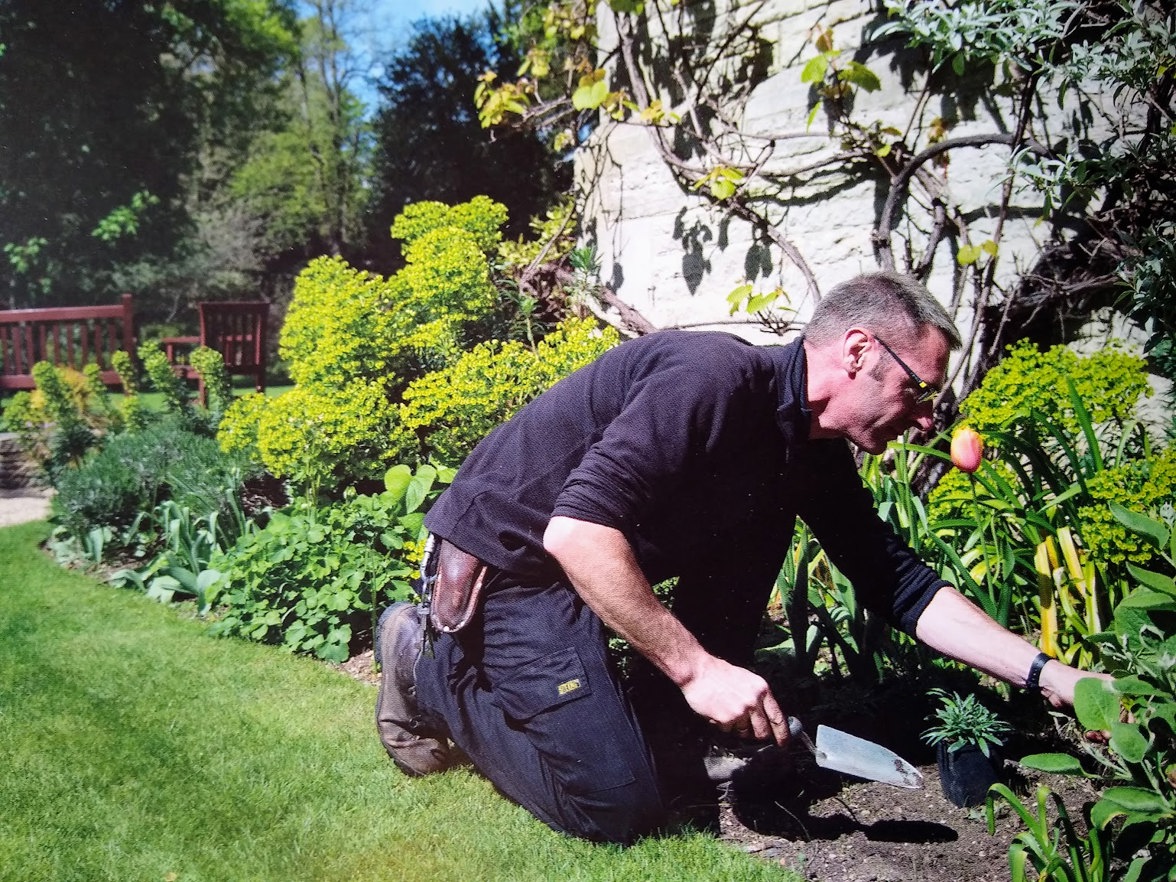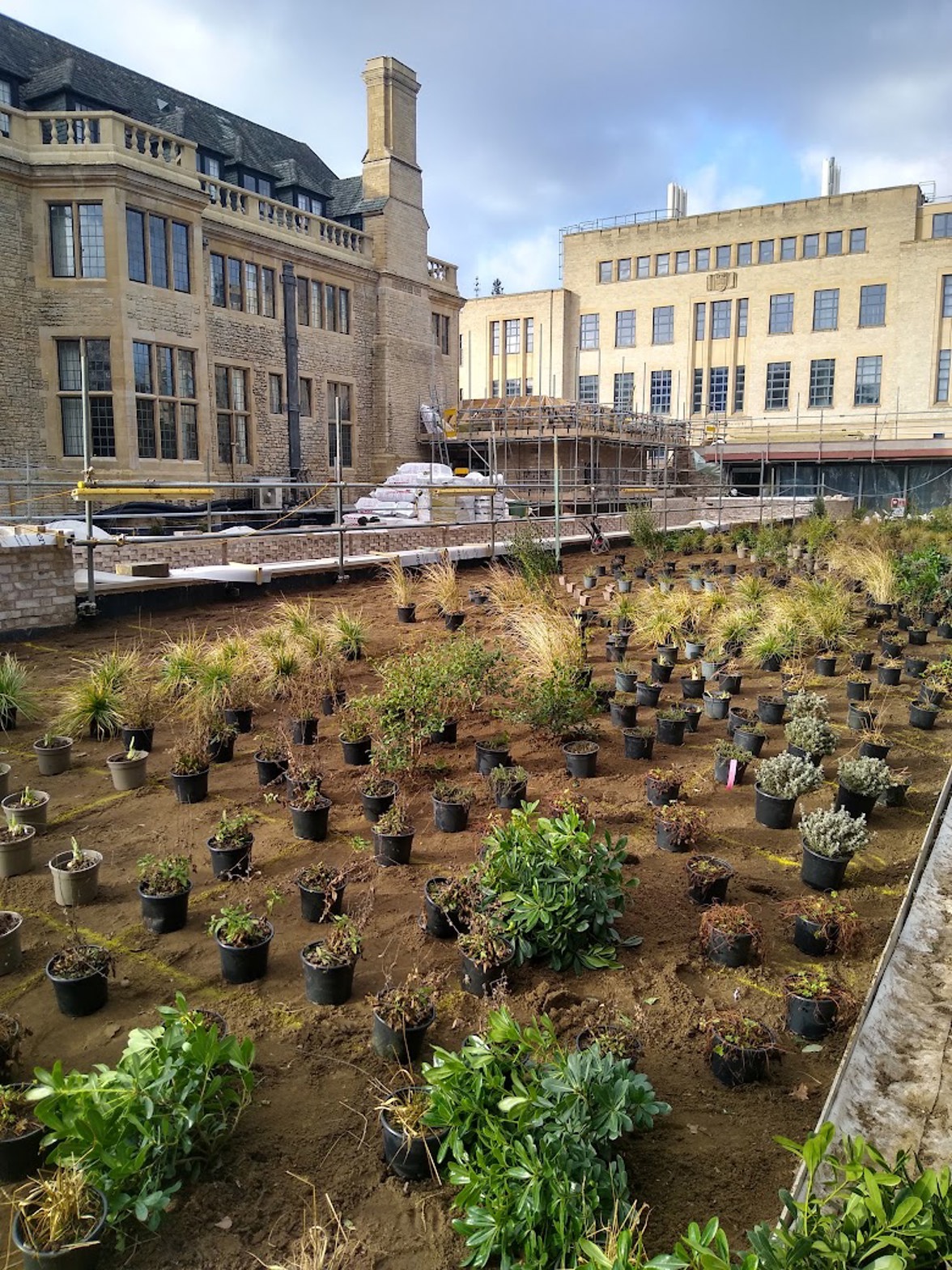The multi-award-winning gardens at Rhodes House, Oxford, are being replanted as part of a project to open up the arts and crafts building and reimagine it as one of the city’s most modern conferencing and convening centres. Head Gardener Neil Wigfield remembers the socialite Norah Lindsay who first laid out the gardens in 1928.
How a pioneering woman created one of Oxford’s finest gardens
Wednesday 05 April, 2023by Neil Wigfield

Time acts differently in a garden. The seasons pass in a continuous loop, the same things happening year-on-year, but where change is a reassuring constant.
There is a feeling of great momentum in the Rhodes House garden, as if we are standing at some mercurial tipping point. The site as a whole is in a state of transition, with images only previously hinted at on paper plans, now appearing from the tumult of the construction site as tangibly solid buildings of stone and wood and glass.

Where only a few months ago a vast gaping excavation hole stood open to the skies, there now stands the architecturally beautiful entrance to the conference centre, rendered in honeyed stone, and crowned with an elevated planter filled to the brim with fresh soil and endless planting possibilities.
Here a matrix of tall transparent grasses will play host to a plant community, whose delicate beauty belies their ability to conquer the xerophytic environment. Bright Nerines, ribbons of colourful Asters from the American prairies, South African ‘Kniphofia’ Hot Pokers, and the delicate umbels of our own humble native wild carrot, ‘Daucus corota’, will form a haze of colour and texture to ‘float’ over the heads of conference delegates below.
Redesigning a garden is a daunting but exhilarating prospect, as anyone who has looked out on a freshly turned patch of ground will recognise. It conjures up hopes for the future, and thoughts about what went before.
Looking at the freshly scrubbed stonework of Rhodes House, stripped of all foliage, ivies and vines and surrounded by a blank canvas of bare soil over the past few months, it is curious to realise that this must be the same view that met the first designer of the garden in 1928, when the building was freshly new. Two thin pieces of paper in the archives record this specific period; the first alludes to 'Mrs Lindsay being paid £75 for 15 days planting in the Rhodes House gardens' (…all true history resides in the receipts). This was Norah Lindsay, the pioneer socialite garden designer who between the World Wars became a major influence on garden design and planting in the United Kingdom and on the Continent.
From an aristocratic family, she employed her horticultural flair in the country house gardens of her many friends, including Vita Sackville-West (Sissinghurst), Lawrence Johnston (Hidcote) and the Prince of Wales (Fort Belvedere). She spent her entire life socialising with the upper echelons of society which led to many commissions from a client base which included royalty, English nobility and American expatriates. Indeed, it was while, 'dining with Nancy and Waldorf (Astor) at Cliveden, that Norah was first introduced to Lord Lothian, Secretary of the Rhodes Trust in 1927'. Their ensuing friendship resulted in Norah being asked to plant the gardens around the newly built Rhodes House.
History predominantly remembers those that write about their works, and that her name is so little-known today is in part due to her particularly canny business ‘Modus Operandi’. Declining to produce drawn plans or plant lists, Norah insisted that clients invite her to stay with them as a house guest while she created their gardens, with the proviso that she would need to return for a period of time each year in a ‘consultancy’ role. In this manner she left little written trace, but ensured both continuous employment and access to the heart of the ‘Social Season’ throughout Britain and Europe.
Rhodes House was Norah’s first real commercial venture, which may explain her second appearance in the Trust’s archive just three years later, which states, 'Having left no record or planting plan, the garden has mostly failed', her trademark opulent planting being ill suited to the vagaries of the north-facing aspect of the long herbaceous border.
As a new garden begins to unfold, Norah’s legacy will be referenced in the installation of her signature trademark planting of topiarised Hornbeam columns within the long herbaceous border. And those who stroll amongst the new plantings might wish to consider this ‘first gardener’, described as having ‘wit, beauty and a bohemian spirit’, and who dressed for gardening, 'mostly in tinsel and leopard print and baroque pearls and emeralds'.
Neil Wigfield is Head Gardener at Rhodes House, Oxford. Read more about the transformation of Rhodes House and its gardens

